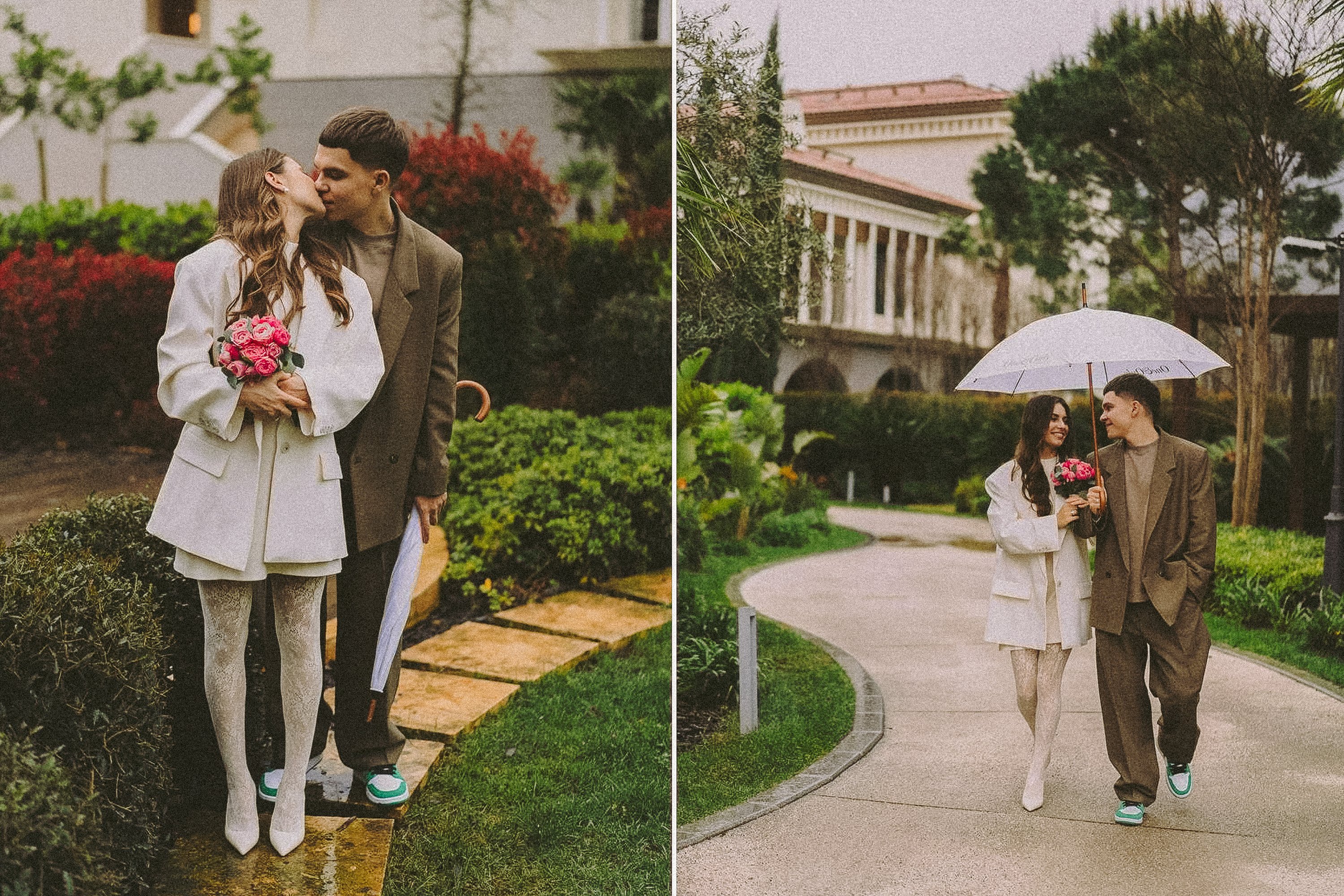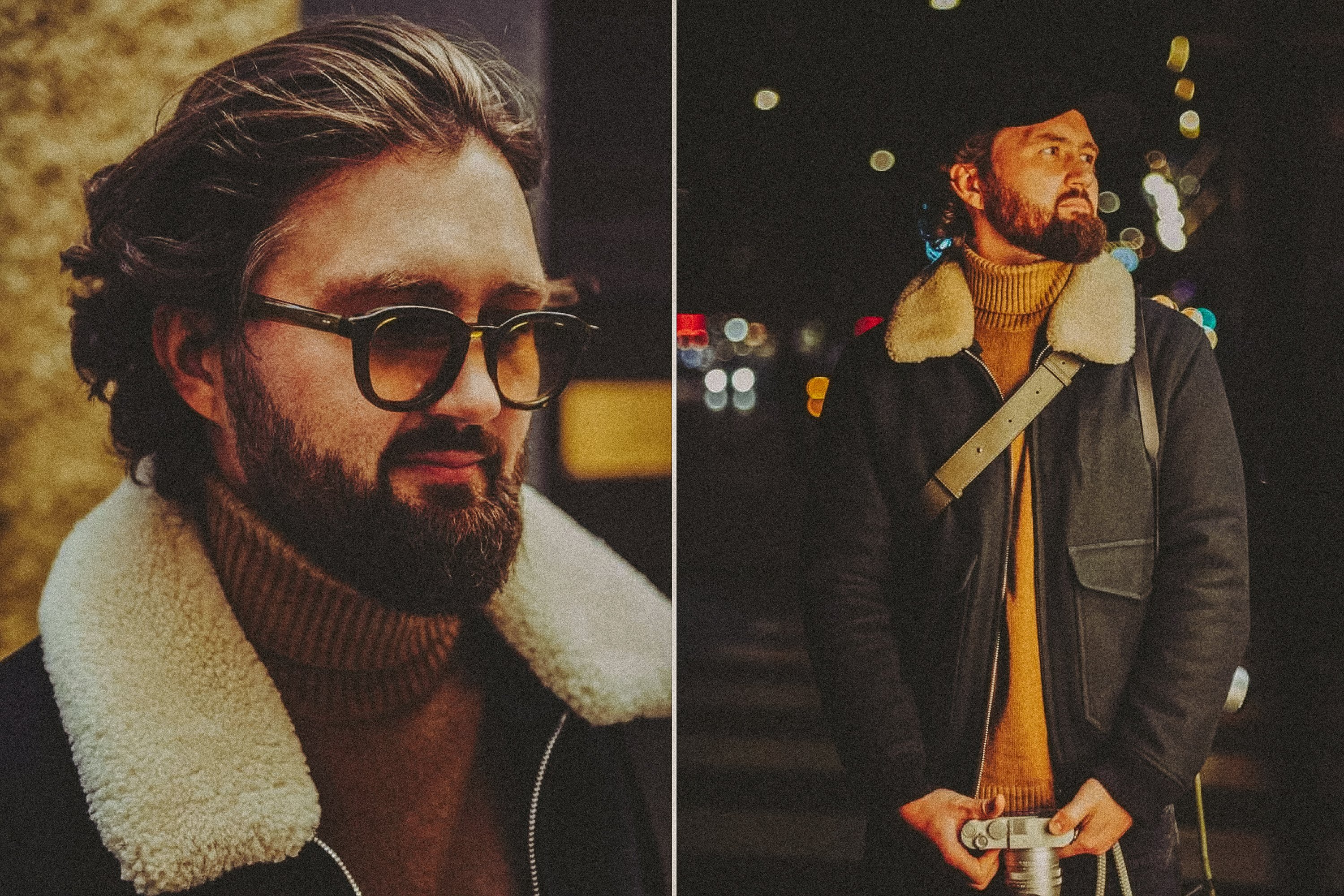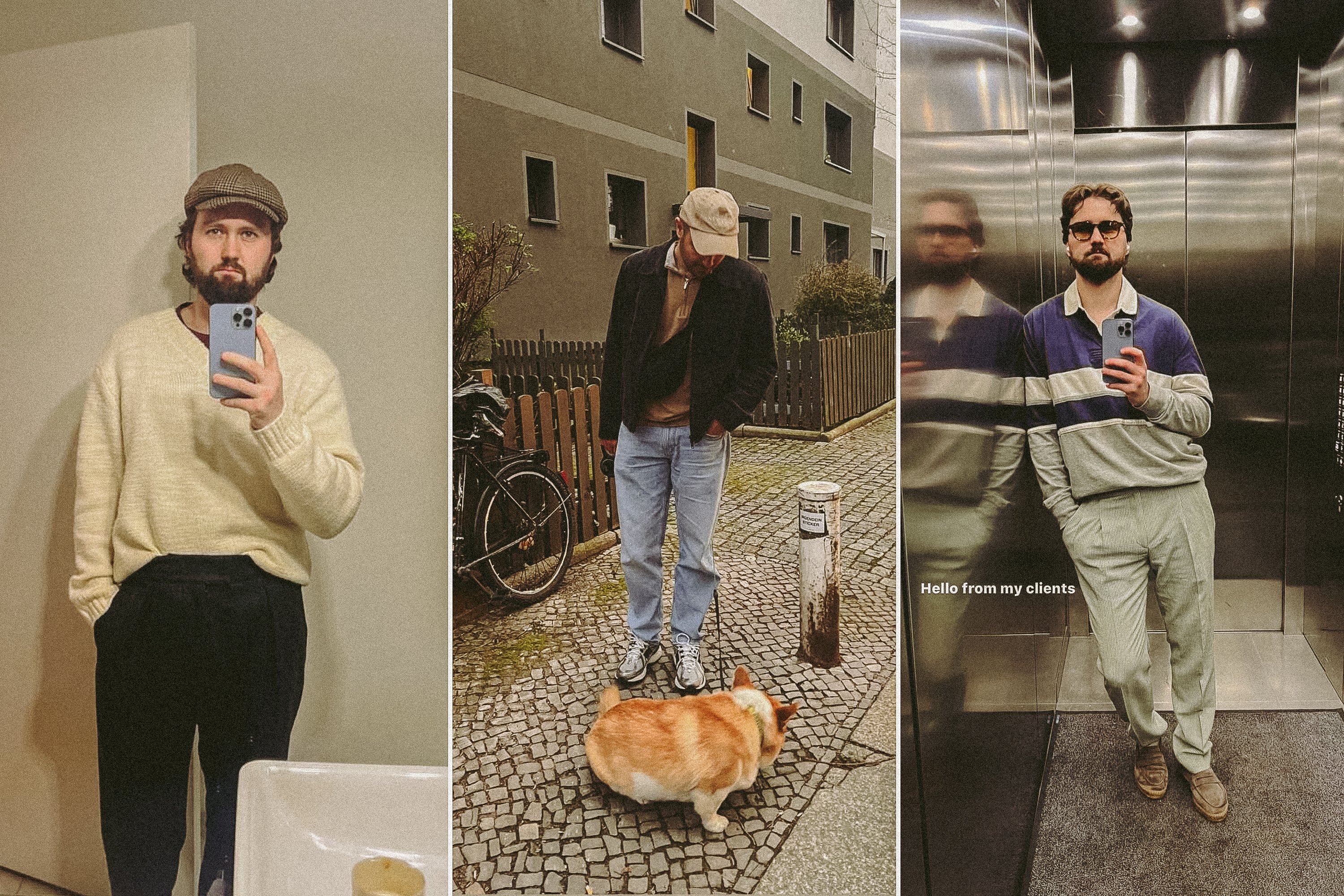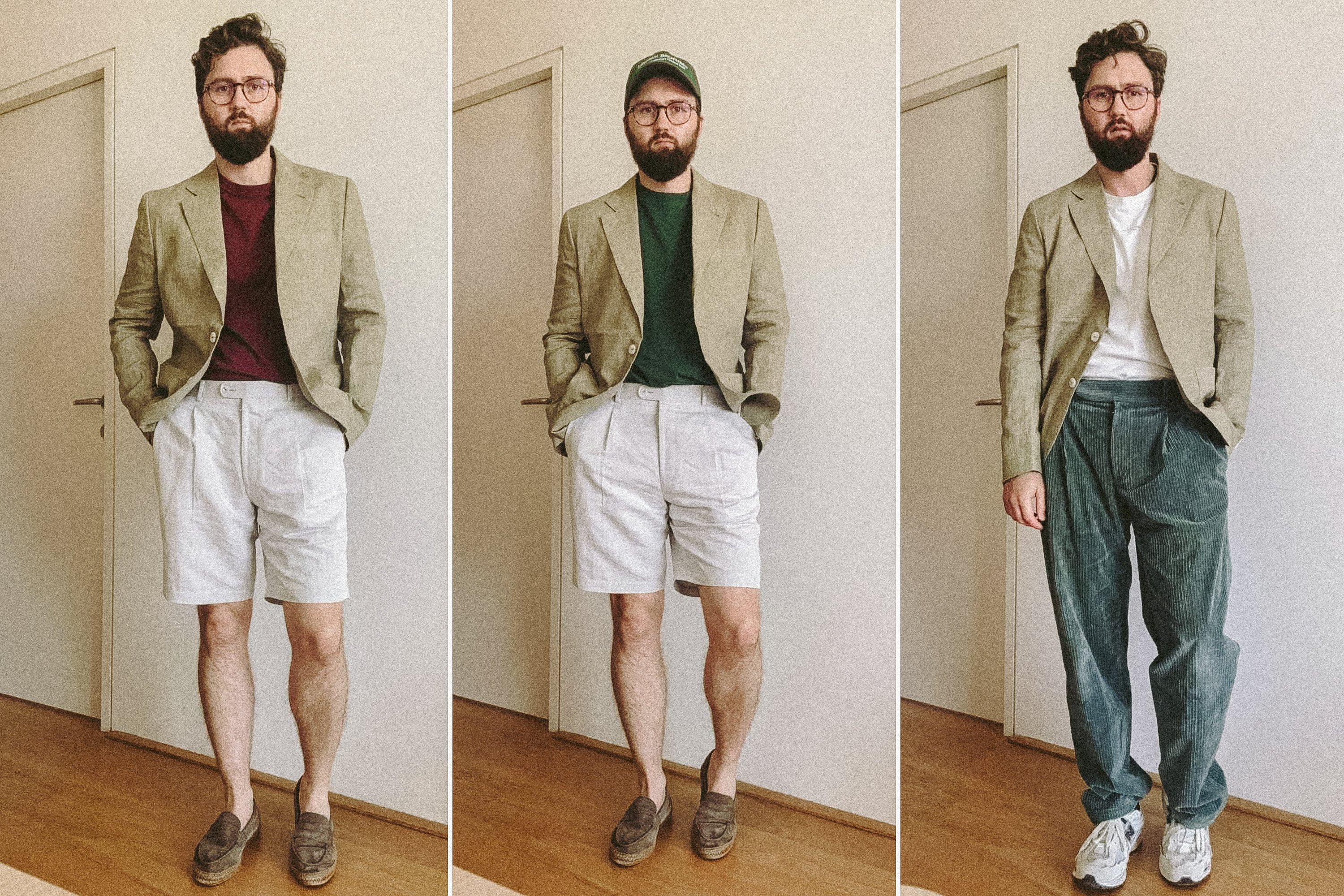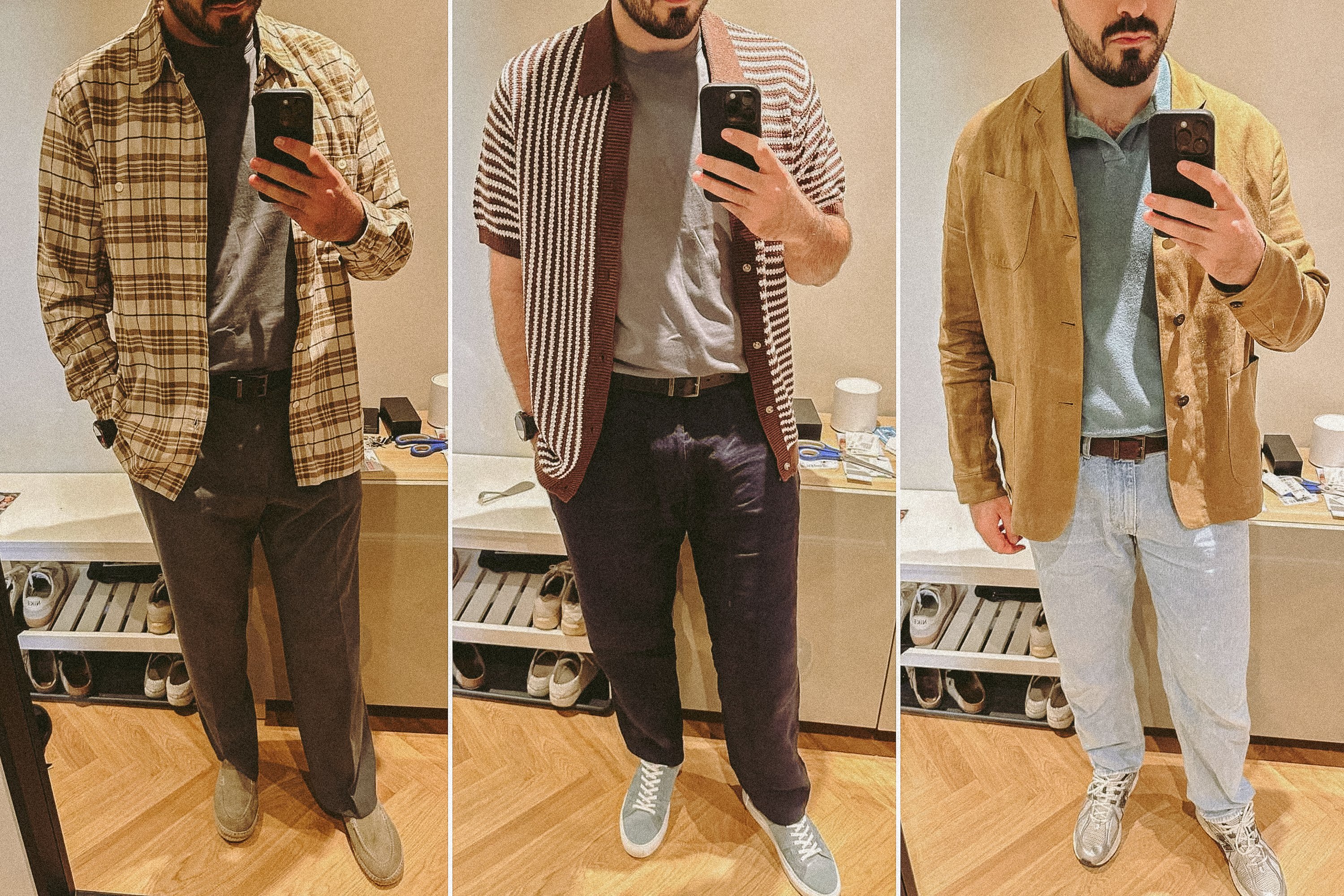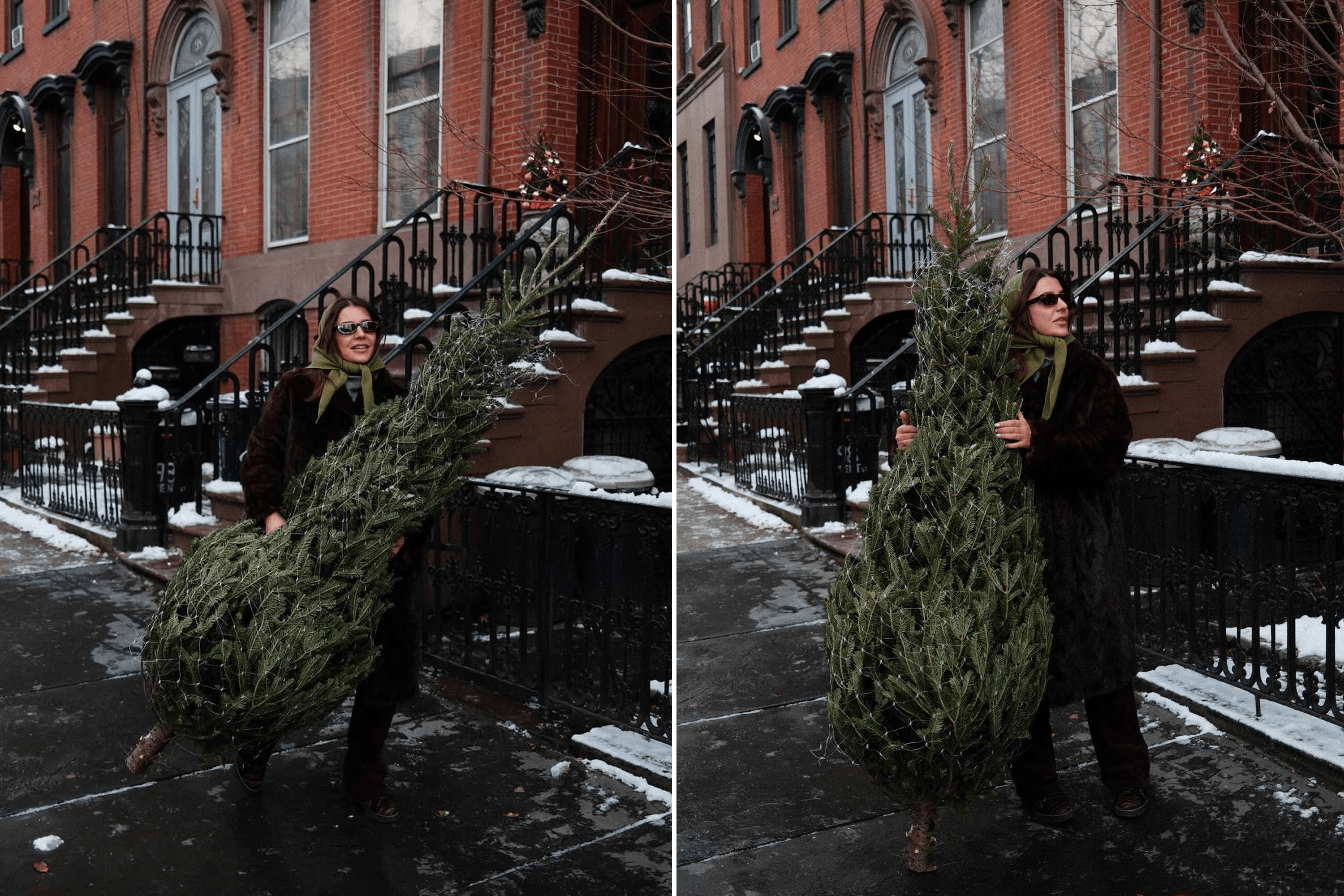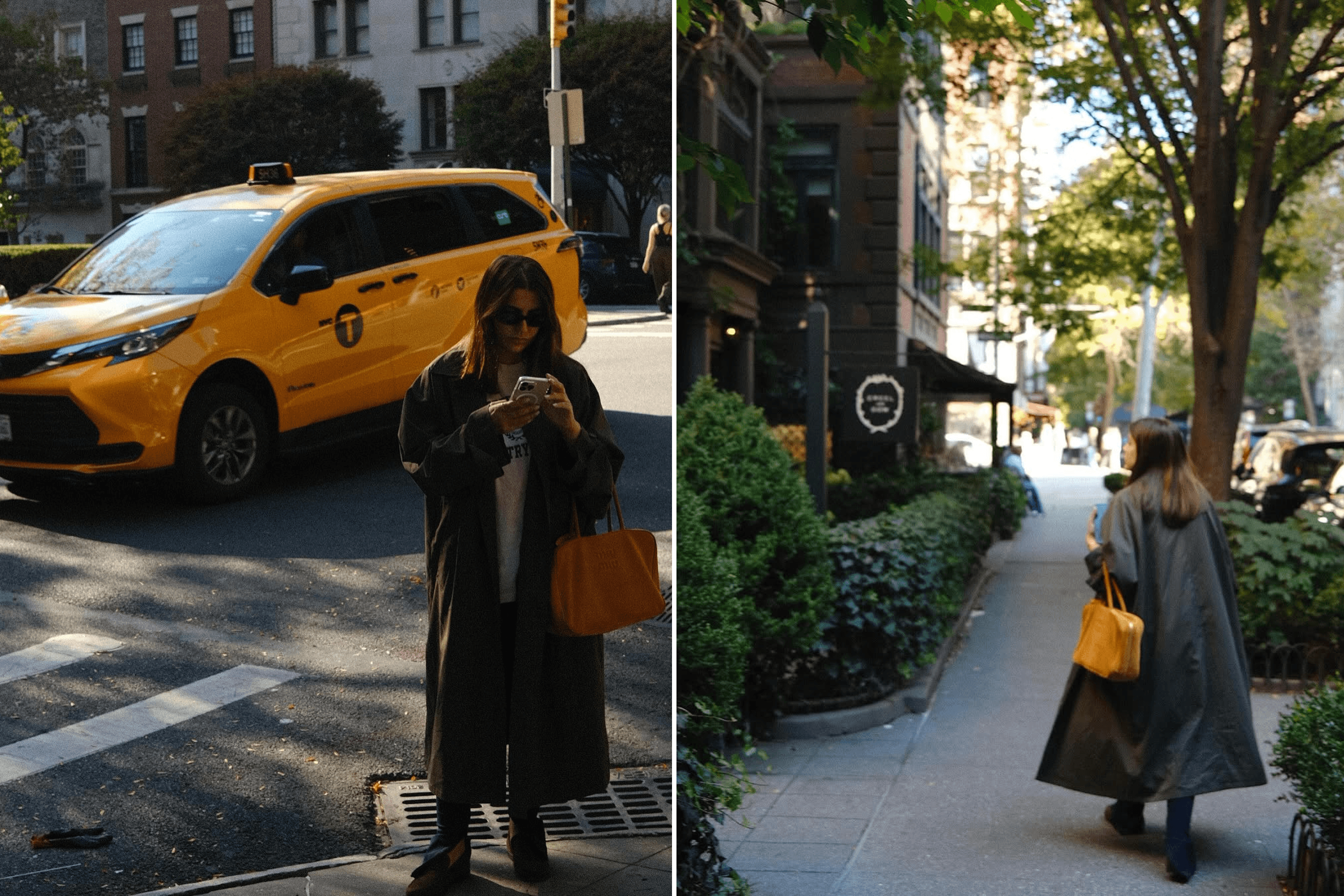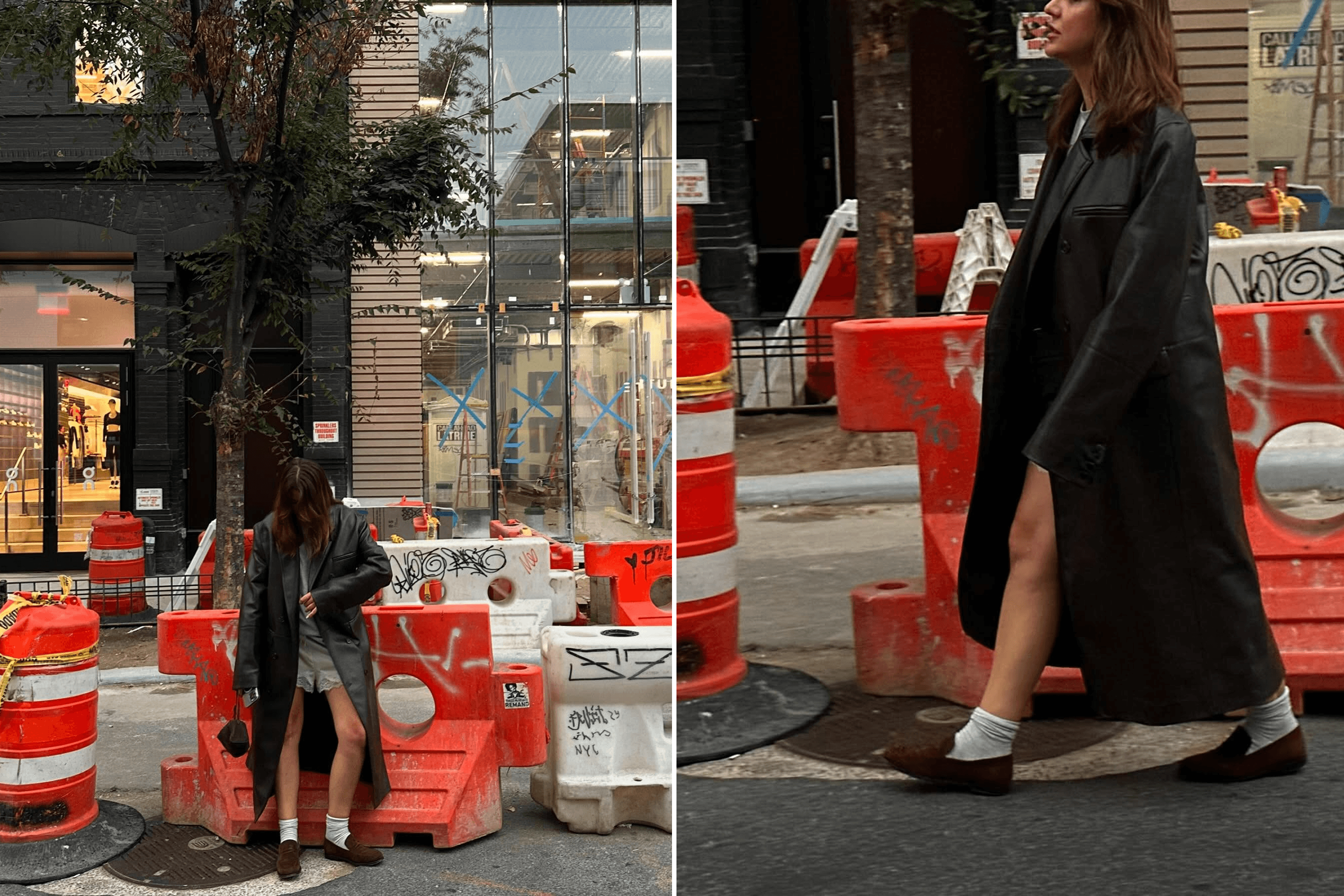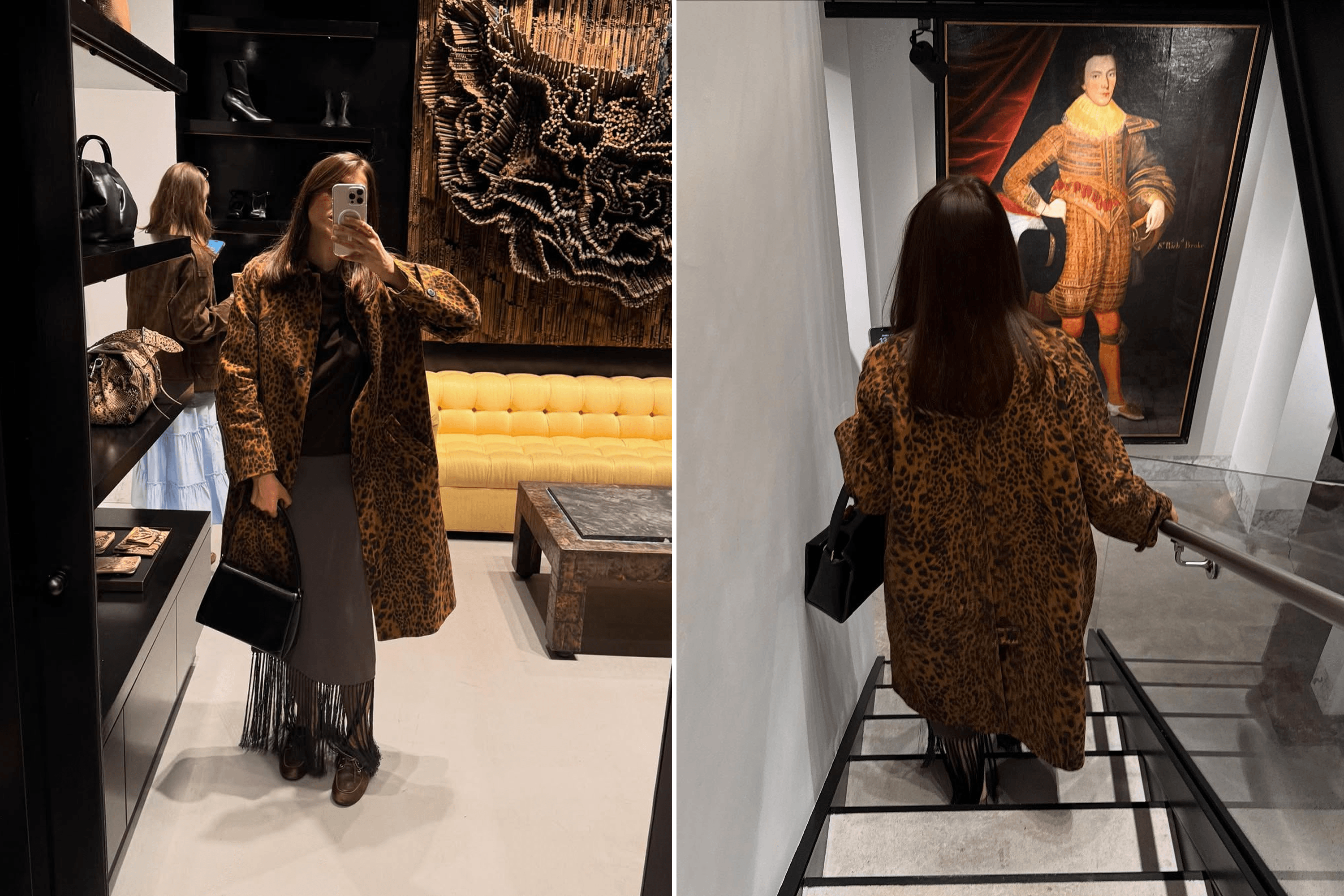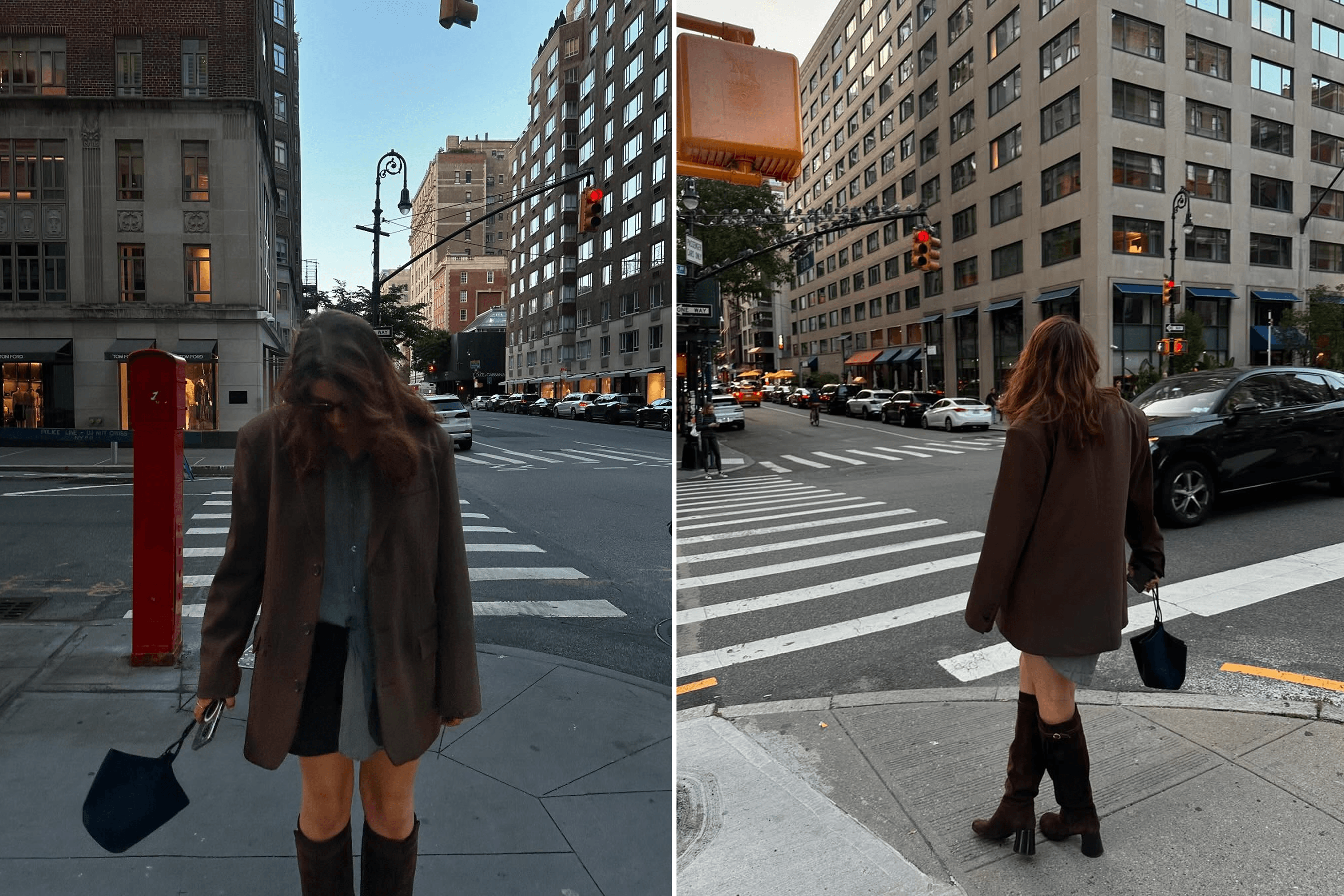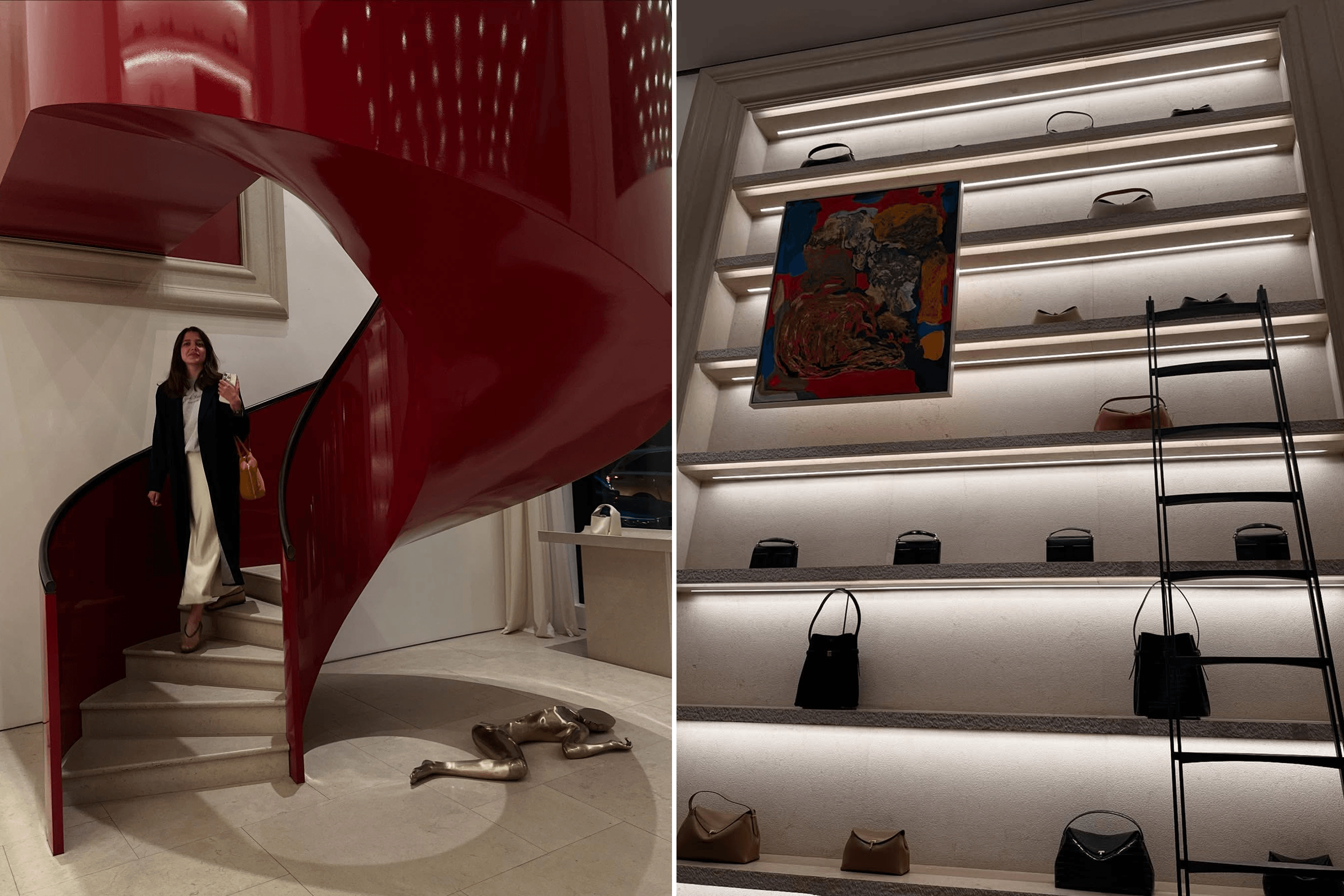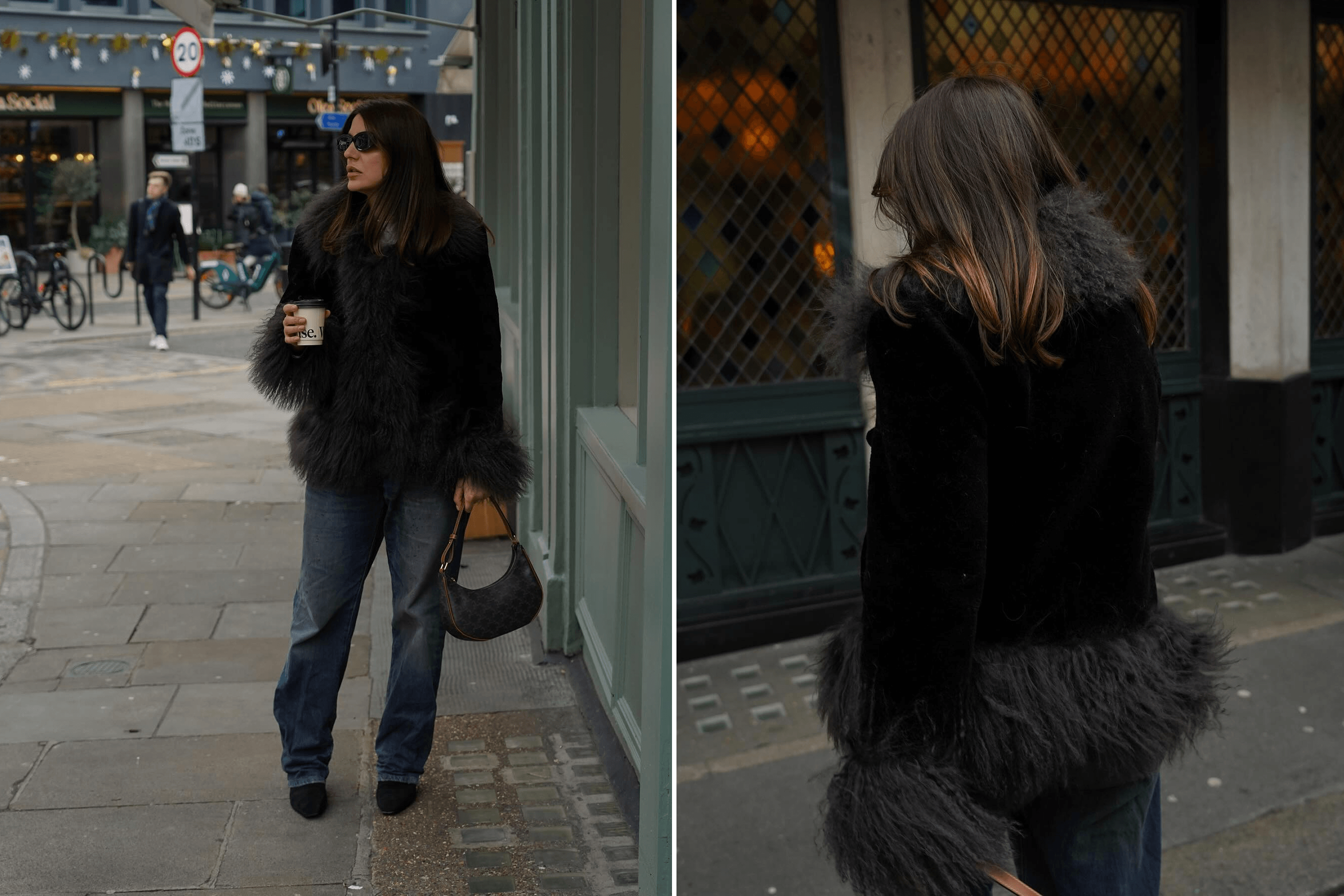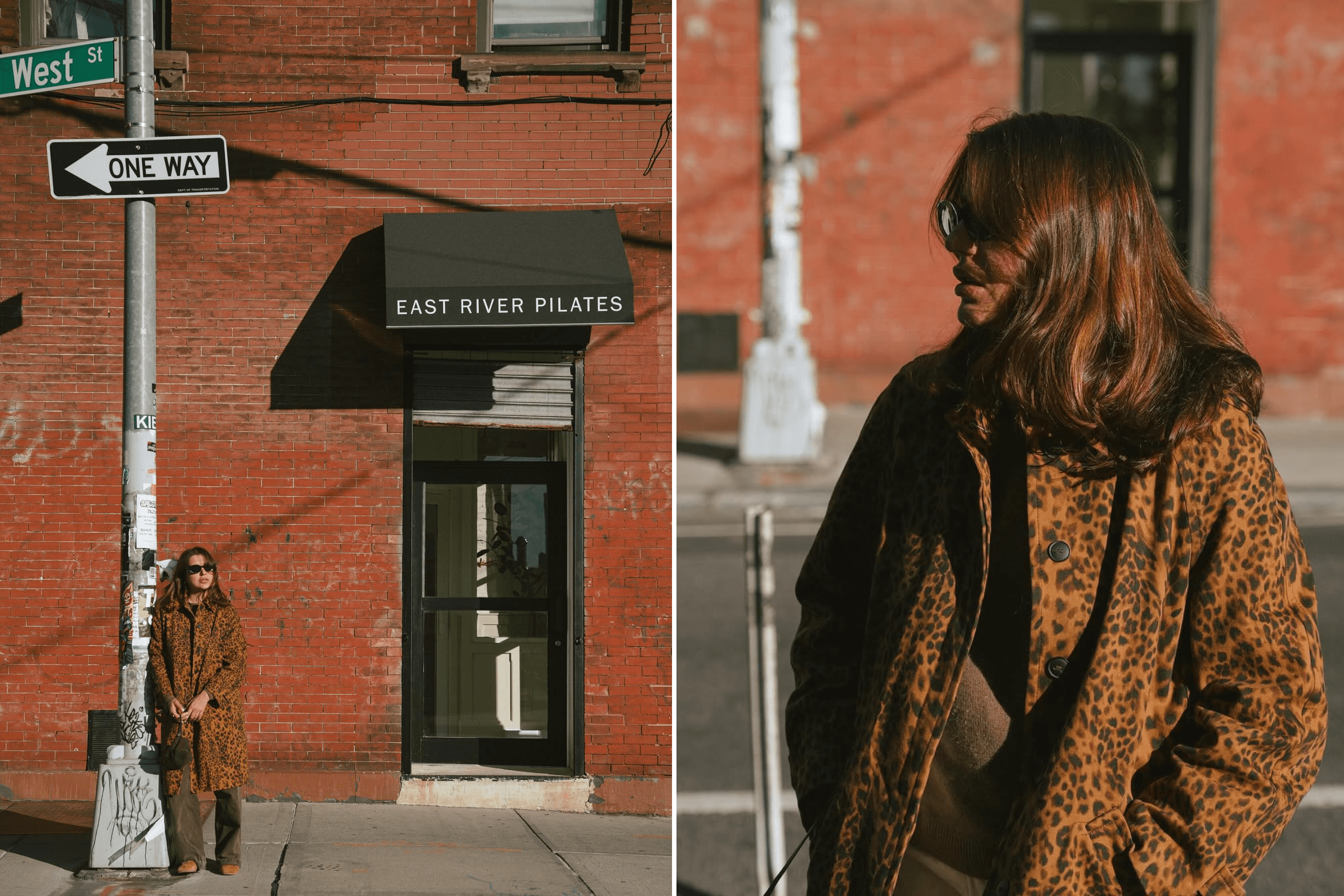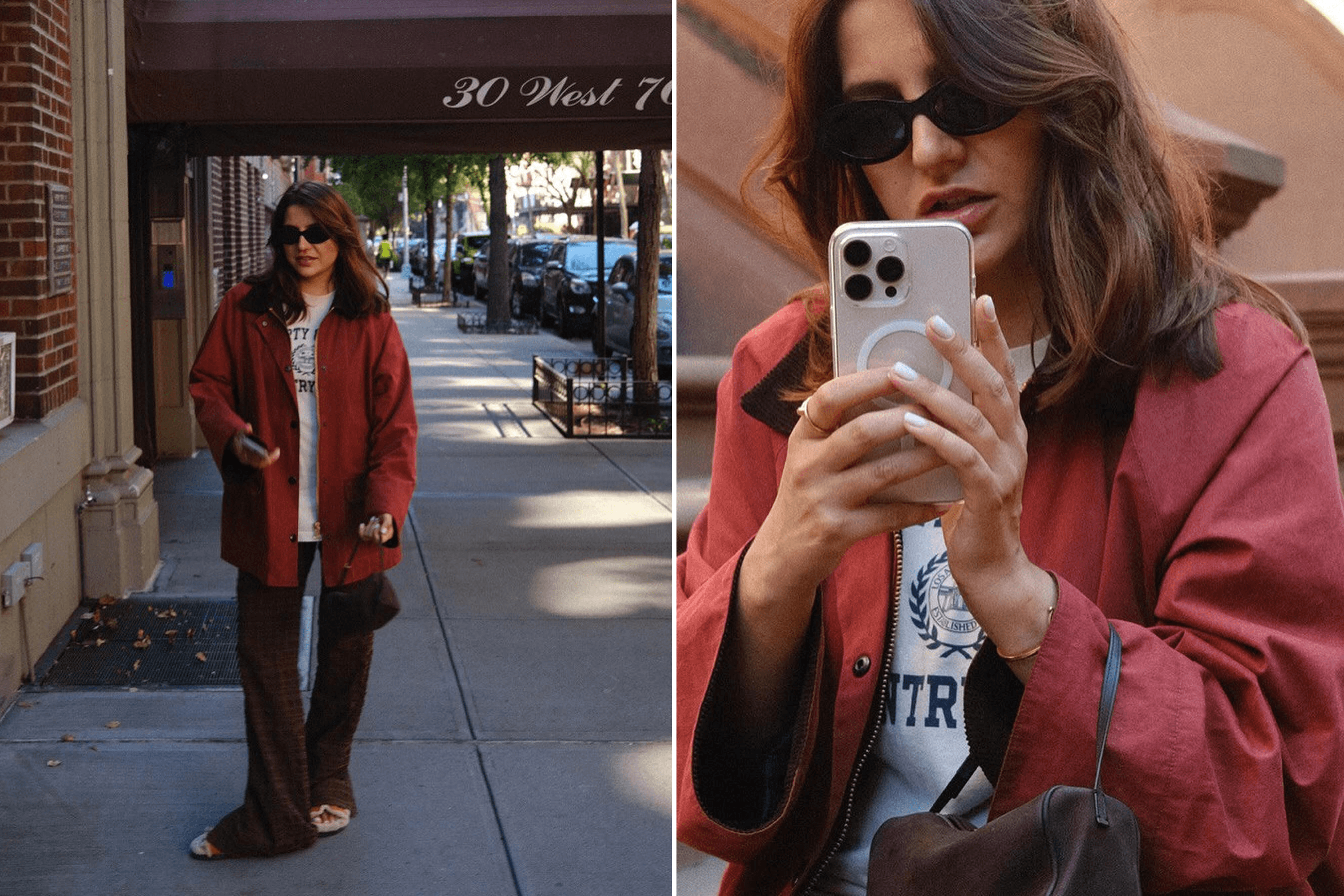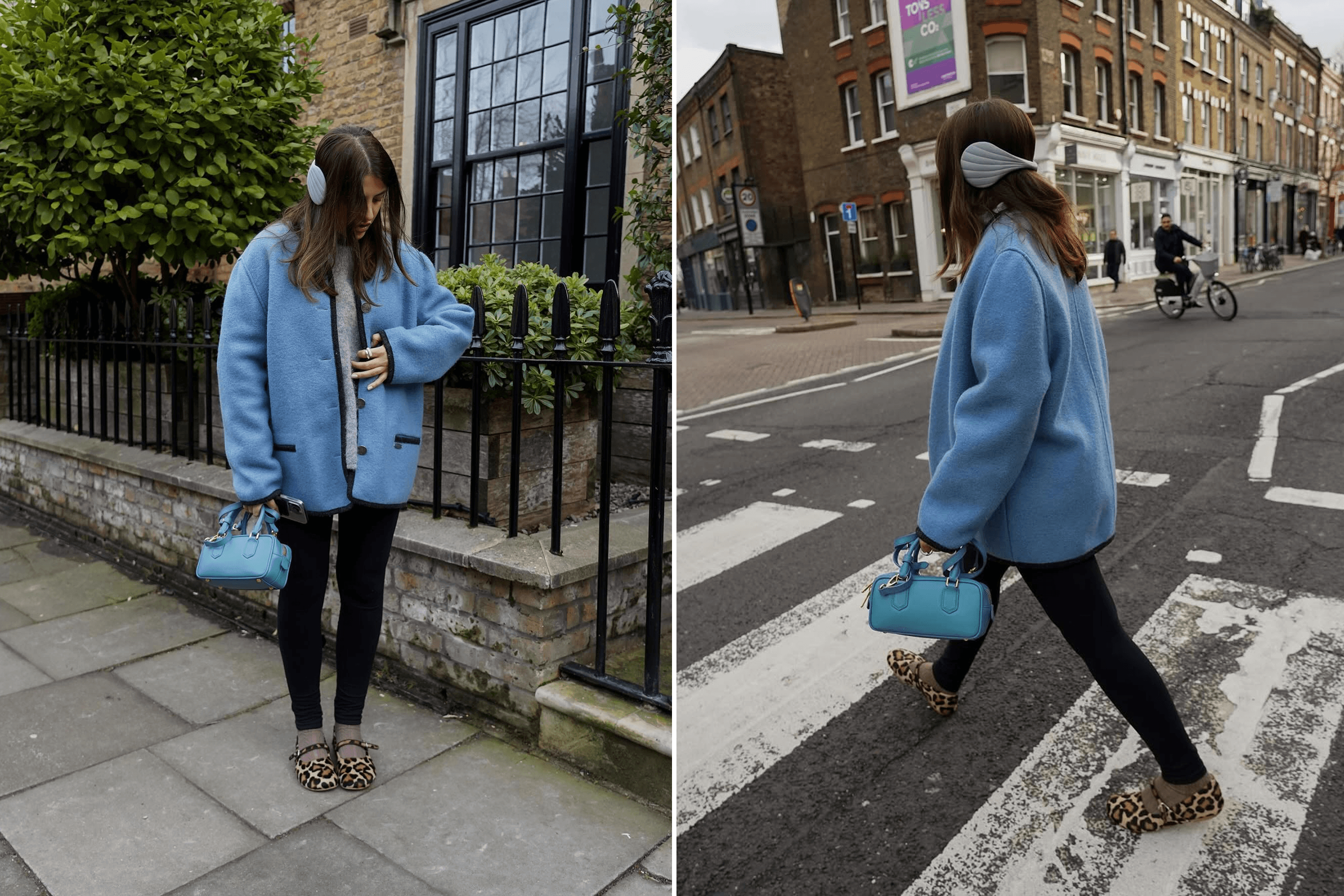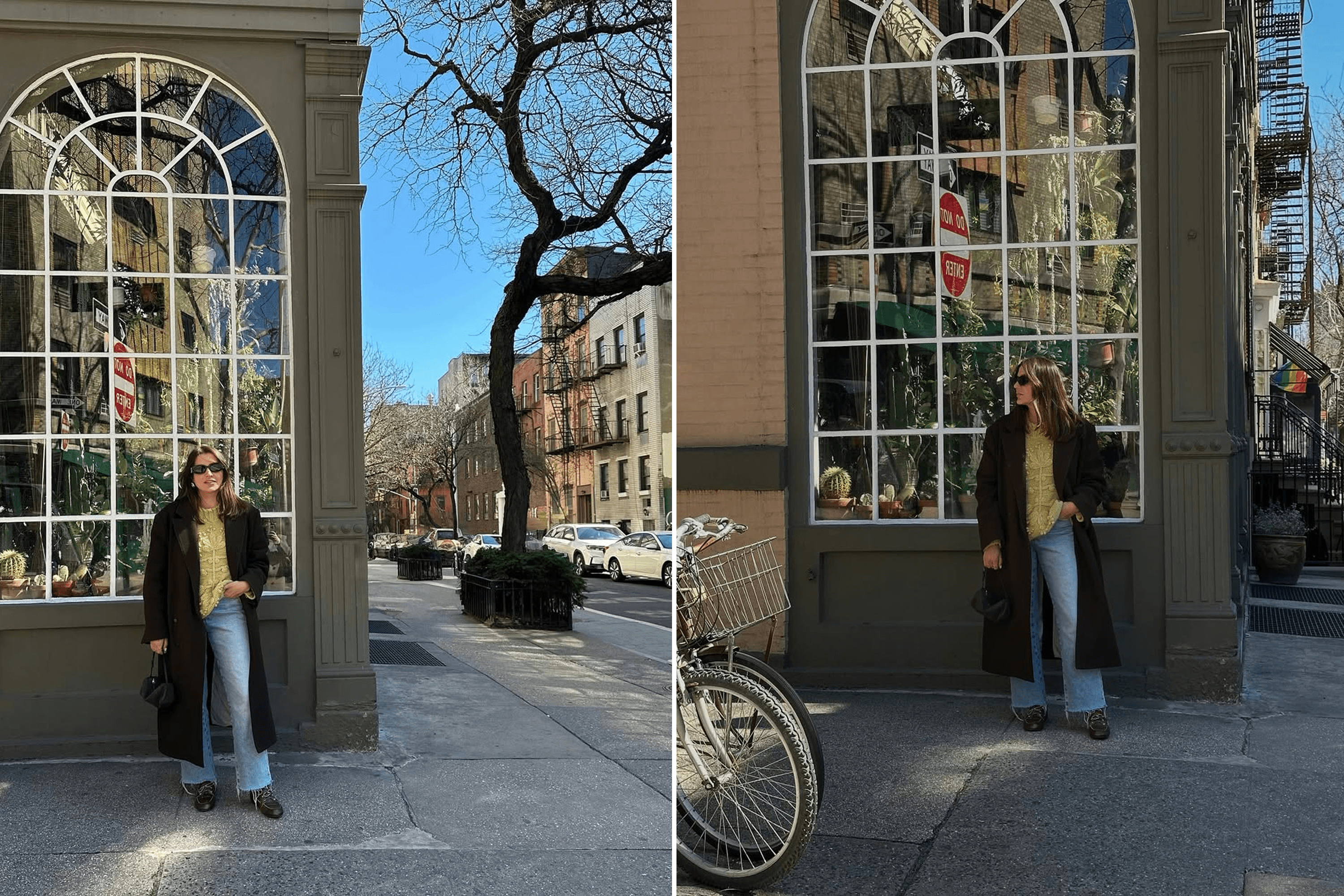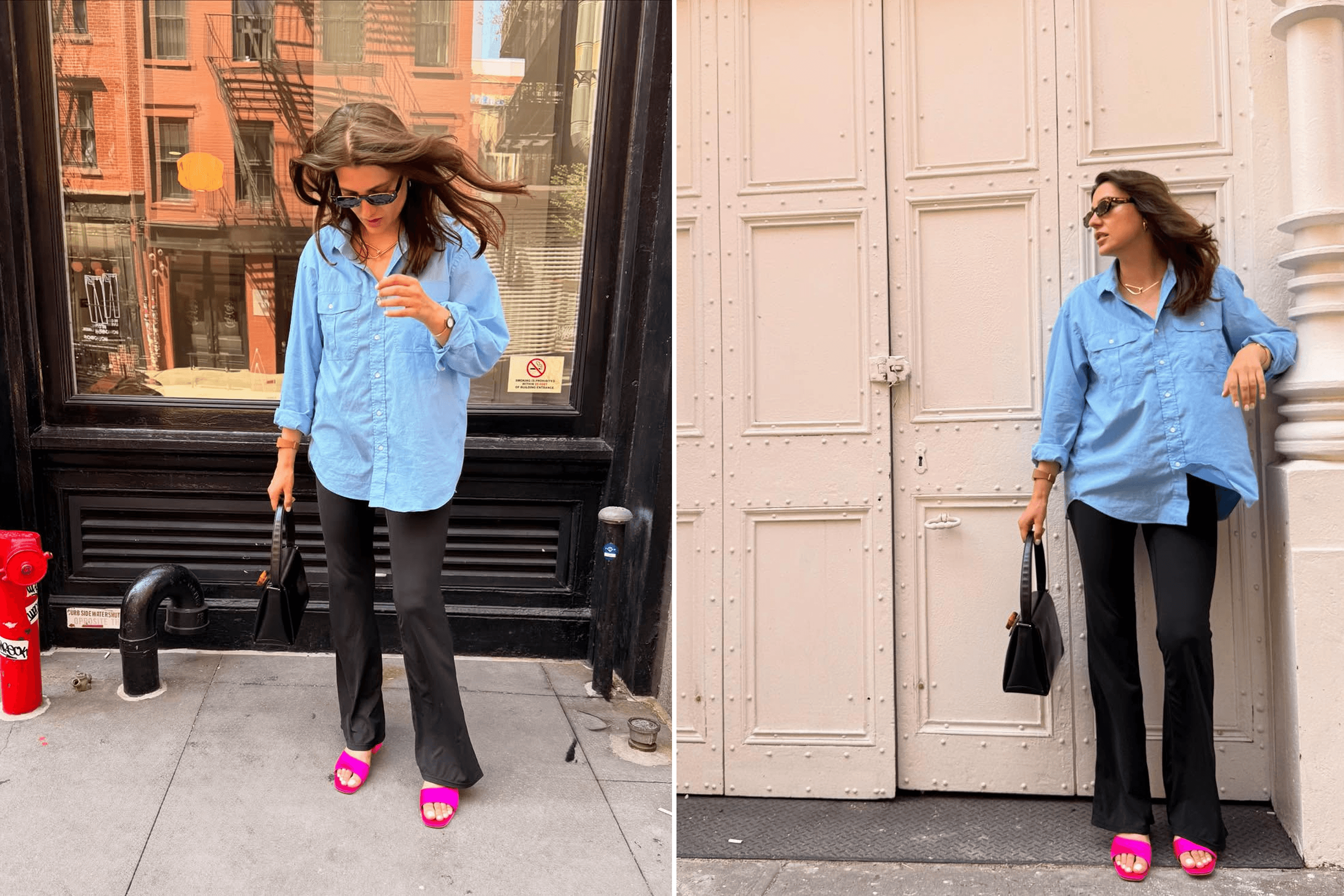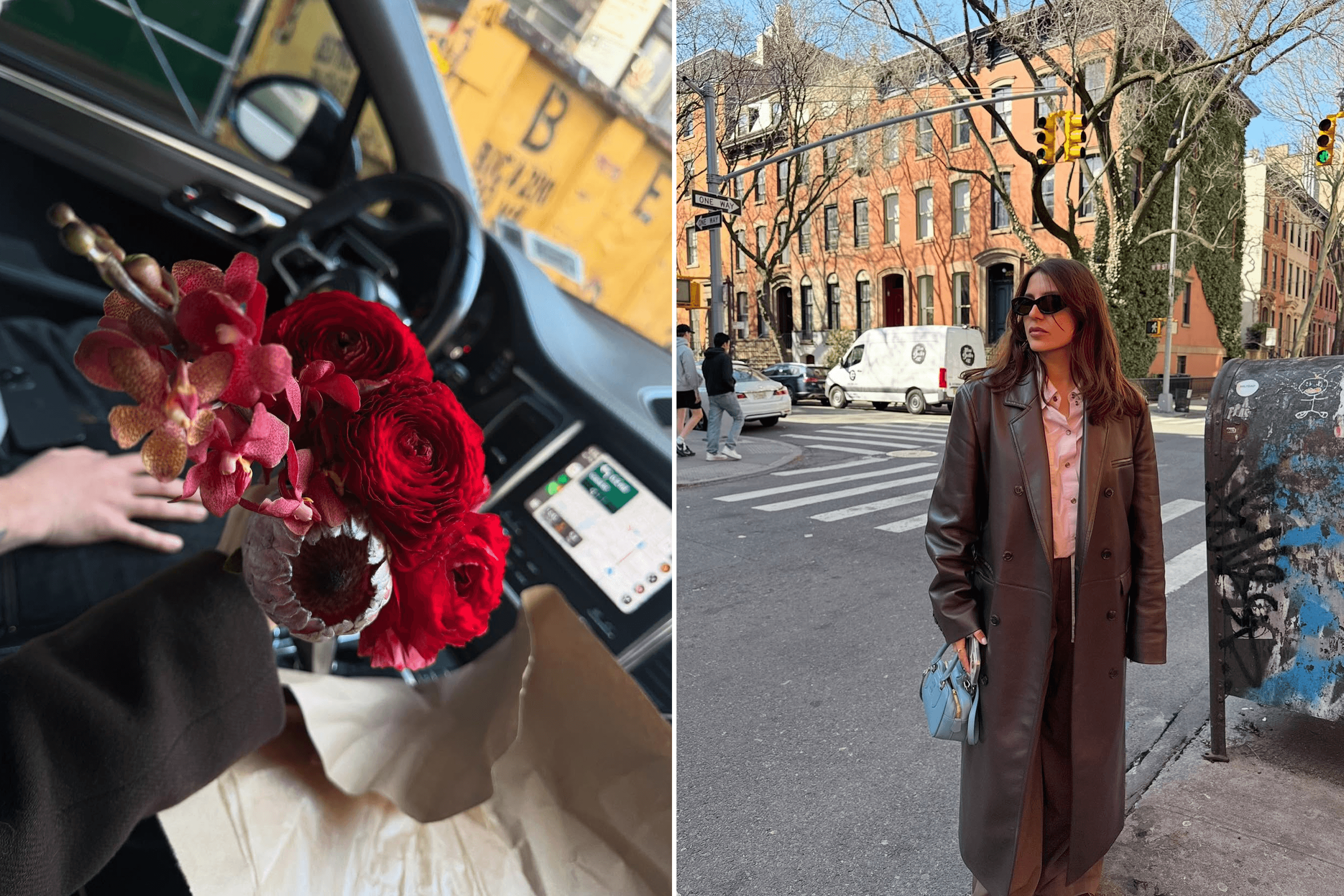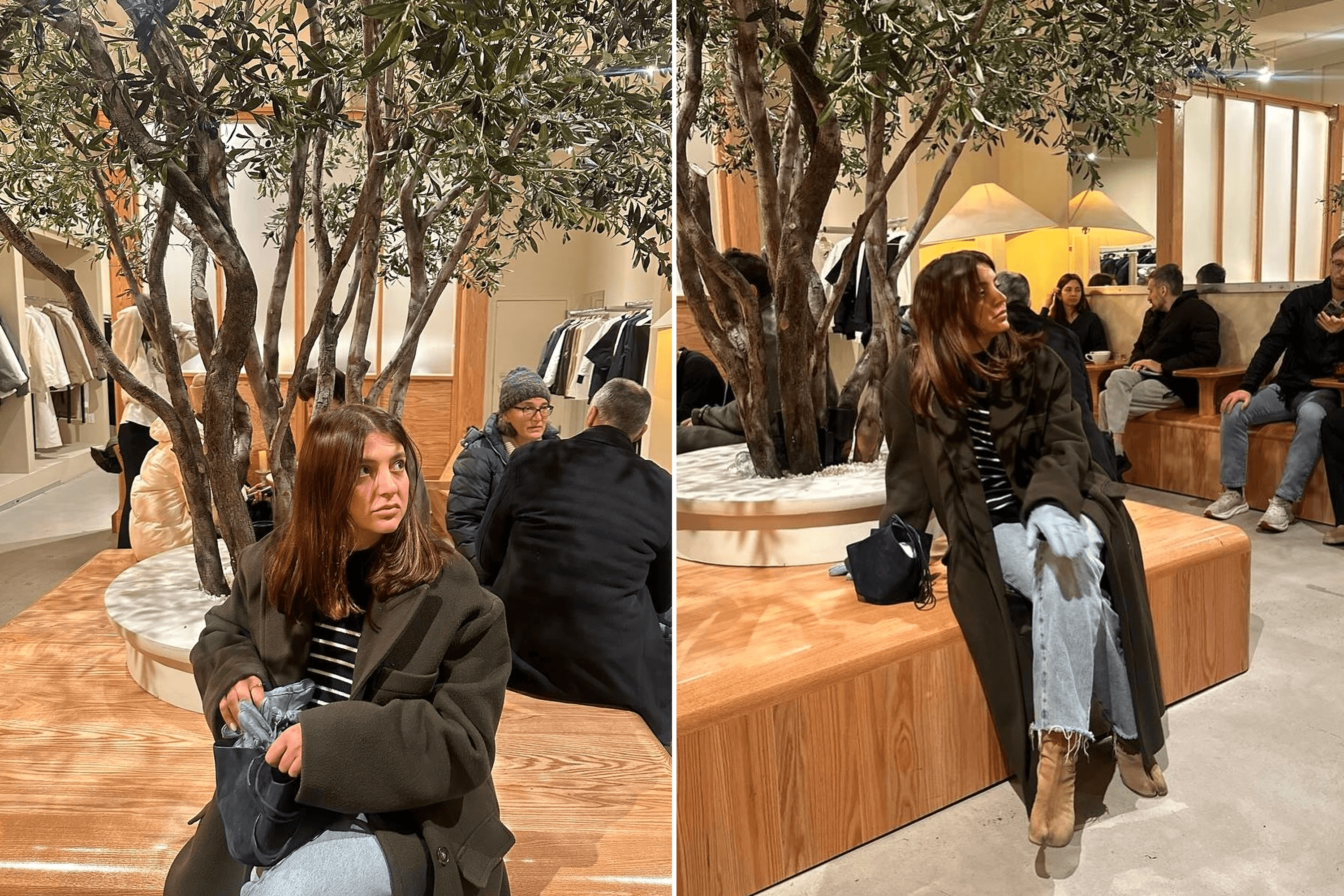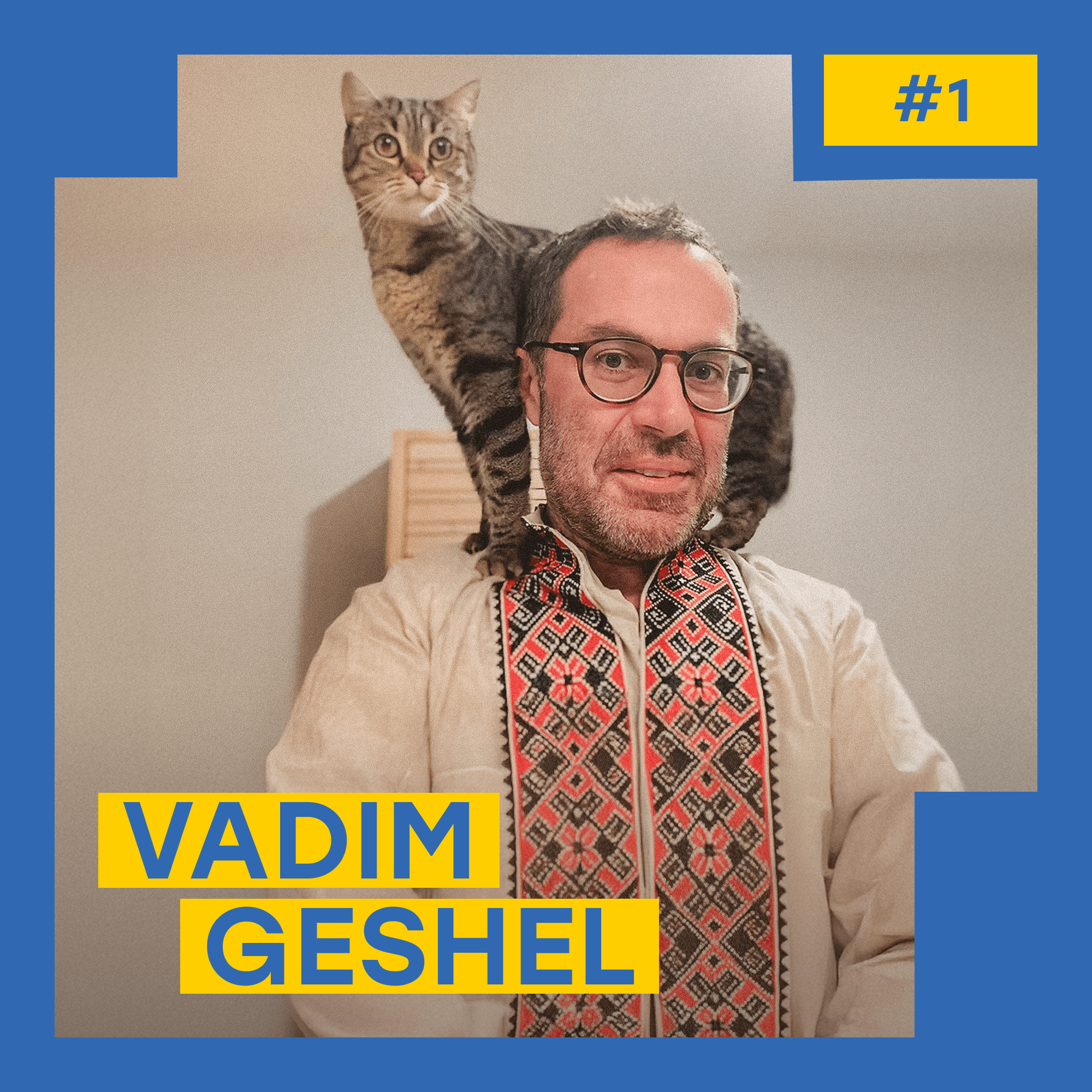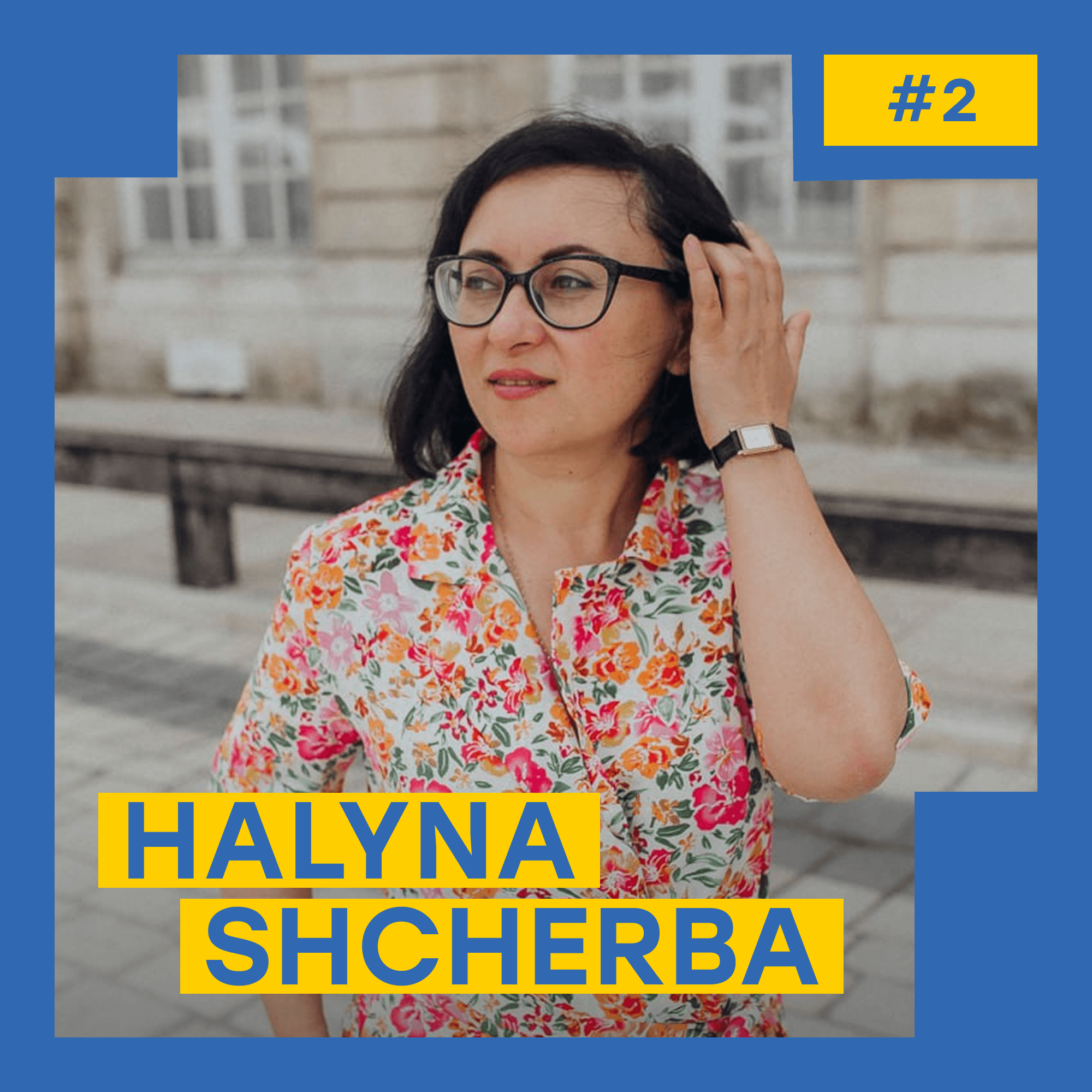Tania Podakina is a stylist with over a decade of experience and the creator of the fashion blog What About Style on Telegram. She studied at the University of the Arts London and has contributed articles on style to Vogue, Jetsetter, and Whatusee. For six years, she ran a bespoke men’s tailoring studio. New York quickly became her favourite city for both shopping and leisure — and a year ago, she made the move permanent.
Today, Tania works with Ukrainian clients from around the world online, and also offers in-person shopping sessions and wardrobe consultations in New York. Her main audience consists of Ukrainian-American entrepreneurs and influencers who want to reinvent their style or build a healthier relationship with their clothing.
In the YBBP podcast “I’m Just Asking”, Tania talks about how a stylist’s job is similar to that of a therapist, which Ukrainian designers are trending in New York, and how you can express your inner child — even when attending meetings with a strict dress code. Below are some of the key takeaways.
About My Work and Male Clients
My work is divided into two parts: online and offline. I moved to New York a year ago, but I had already been here 16 times before that. I had clients, a community, and friends here already. Online, I work with clients in Ukraine and around the world, as well as with clients in New York or those who come here for shopping. Currently, most of my clients are Ukrainian-New York influencers who have already built their careers in the U.S. Online, I also work with top managers, entrepreneurs, and anyone looking to get their wardrobe in order.
I have a fairly high percentage of male clients, which I want to emphasize. Styling tends to raise fewer questions among women because it’s more natural to them and easier to understand why they would see a stylist. For men, this area is still evolving. There’s a perception that men’s styling is mostly for the wealthy— as it’s a luxury or something you have to be “ready for.” But that’s not true. I have clients from all backgrounds.
Many men have held on to their inner child very well. That’s why they love, for example, adding a fun, brightly colored lining with comics or patterns inside a casual blazer. Another thing I’ve noticed among men who often need to dress formally is fun socks. It’s great because even if no one sees them, the client feels good—it’s a little personal touch only they know about.
Here’s a life hack for men: to keep your clothes from wearing out too quickly, buy duplicates or similar items. Rotating several pieces will help them last much longer than wearing one favorite item until it’s worn out. I often hear, “Here’s my favorite T-shirt—find me one just like it.” But sometimes it’s no longer available. So it’s better to buy a few at once, so you have options and can wear everything evenly—this way, your clothes will last much longer.
About Clothing and Business
There are no strict rules about how one should dress. There are so many ways to mix and match, wear things differently, and create completely new looks. I often have to challenge the myth that dressing well is expensive. For me, styling is a form of creativity. A great wardrobe, in my opinion, is one where you can combine premium pieces with items from the mass market and still make it all functional. And it doesn’t necessarily require a big budget.
There’s also a common misconception that clothing should be only black and white. But that’s not true — there are countless shades to explore. Whether or not we dive into them depends on what makes the client feel comfortable.
Even if there’s a dress code, there’s always a way to make it a win-win. I’m sure you’ve experienced situations where everything seems fine during a meeting, the communication flows, but something still feels off. Often, it’s because the person feels uncomfortable in their outfit — they’re distracted by it. My job is to make sure that in any situation, my client never has to worry about their clothing. They should feel great, smile at their reflection, and wear pieces that amplify their mood and confidence.
When a person feels great because they like what they’re wearing, it becomes much easier to close deals. I’ve had many stories where a client was going to a meeting to sign a contract and said, “I felt like a million bucks. It was as if I had a pile of that money in my bag, and I wasn’t just signing on behalf of the company — I signed with confidence and excitement.”
There used to be the question of what color to wear to look like you have money. But for me, it’s more about the inner feeling of comfort. If you want to show that you’re an entrepreneur who respects the context of the event, that can be done through clothing. Like showing you have a taste for something unique, that you’re up-to-date and modern. It’s a fine line between demonstrating that a person is multifaceted without crossing into dressing just to attract attention.
For me, the biggest taboo is showing through your clothes that you don’t care about the meeting or yourself. There’s a thin line between not overdoing it and over-dressing. But above all, it’s about self-respect. People are so different, they have different charisma, and often want to highlight it in their own way. Overdressing is when you look at someone and realize they tried way too hard to look good for the event, and the focus of the whole meeting is their appearance. That’s just too much.
About the stylist’s work
You come to a stylist when you realize that clothing causes too many problems and negative emotions, and you’re ready to trust someone else to guide you through the process — you understand the problem and are open to receiving help. I have quite a few clients, but not every case is successful.
If a person is not ready, it’s better not to go to a stylist. But if there is a need and openness to accept help, the next step is to choose a specialist you can trust. Styling involves a lot of psychology. It’s by no means a substitute for a psychologist, but you work with your inner self-perception, which is quite delicate and very personal. That’s why it’s essential to find a stylist you feel you can trust and be honest and open with.
A stylist helps answer many questions. For example: what to buy, how to buy, where to buy, what goes with what, how to combine pieces? Usually, people say, “This suits me, but I want to wear something else,” or “That doesn’t suit me, how can I get closer to this style?” These are the main questions a stylist addresses. Everything can be styled well so that the person feels comfortable. I believe the main task of a stylist is to see not just one aesthetic or style but many, and help the person combine them all. I don’t show my clients before-and-after photos. It’s the best way to demonstrate how style has changed, but I don’t like comparing clients.
People usually come to me wanting to change their style. And it definitely doesn’t work like: “Okay, today we throw everything out, wear completely new clothes, and change everything at once.” No, it’s a process, and everyone has their own pace. Some people start experimenting faster, others take more time.
If someone decides to become an entrepreneur, what does that mean? Besides meetings with colleagues, they might have meetings with investors, attend conferences, give presentations. So, it’s about taking that context and trying to reflect it within their own comfort zone. But first, the change should be gradual, and second — it shouldn’t look awkward or forced. If the person is trying to do this on their own, I’d suggest choosing references and trying to follow them closely.
A large part of my clients come to me after moving to another country. Clothing and lifestyle definitely change with relocation. That doesn’t mean you have to dress like an average American, but the move has a strong influence. When someone has just moved, it can be stressful, so I’d recommend not focusing on wardrobe right away but rather building a routine first. Then, at their own pace, they can gradually experiment, stay open-minded, and treat it as an adventure to explore themselves and their style in a completely new way. And definitely not setting strict rules like, “Oh, I had this style before, but now I need something totally different.”
Many clients don’t want to wear the clothes they wore during the first three months of the full-scale invasion. In general, clothes, like perfume or scent, carry a lot of memories. If those memories are positive and you want to keep them, then keep those things. But if the memories are tied to someone you no longer are, it’s better to let them go.
About Ukrainian brands in New York
There are several Ukrainian brands in New York. BEVZA is featured both online and in the Frankie Shop’s offline store. It’s nice because they have cool Ukrainian touches, and Frankie Shop is considered a popular New York brand that also showcases this Ukrainian label. Another great example is Manjul, a very cool Ukrainian café in New York that also offers its own clothing line.
I really like the trend of Ukrainian brand pop-ups in New York. A pop-up is when a store presents its collection temporarily—it’s not a shop that operates for a year or two, but rather a brand renting a space for a month to sell jewelry or clothing. For instance, the Odessa-based jewelry brand Grains de Verre is currently showcased in New York for a whole month, and people can come in to buy their pieces. Recently, there was a pop-up by Guzema. Most brands announce these events on social media, and the Ukrainian community shares the news.
I’m glad many Ukrainian brands have started shipping their products abroad. Not all of them, though, since many still don’t have an English version of their website. But most do. Interest in Ukrainian brands surged at the beginning of the full-scale invasion, but not all were able to quickly adjust their websites for an international audience.
I believe the strengths of Ukrainian brands lie in their quality, service, thoughtful approach, prices, and relevance of designs. For some people, it’s about getting a really great piece at a fair price — something similar elsewhere would often cost more. That definitely attracts those who are interested in Ukrainian culture. But many Ukrainian-made clothes don’t necessarily have ethnic motifs — a lot of people are simply drawn to stylish, modern pieces that happen to be from Ukrainian brands. For example, when we launched Indposhiv in London, what helped us stand out was offering high-quality, handmade suits for half the price of similar options. Plus, the level of service and flexibility was unmatched — if a client wanted a slightly shorter blazer or any other custom detail, Indposhiv was always open to it. That combination — flexibility and service — was a huge advantage.
It might seem normal in Ukraine, but for Americans, ordering through DMs is a red flag. It’s seen as a scam. They expect to place orders through an official website, pay by card, and have that legal protection in case something goes wrong. They might message a brand to ask a question, but they’ll never make a purchase directly through social media the way people often do in Ukraine.
As for how Ukrainian brands can become more recognizable — it’s all about strategy. Some focus on working with influencers, which is a great way to raise visibility — brands like Frolov, J’amemme, and Londi have done this well. I’ve seen their pieces on many international influencers. Pop-up formats work really well, especially when they bring people together and aren’t just focused on the Ukrainian community — it’s important to promote them to international audiences here, as people are actually very open and curious. In New York in particular, there’s a strong appreciation for small, independent brands and a real enthusiasm for supporting creative entrepreneurs.

